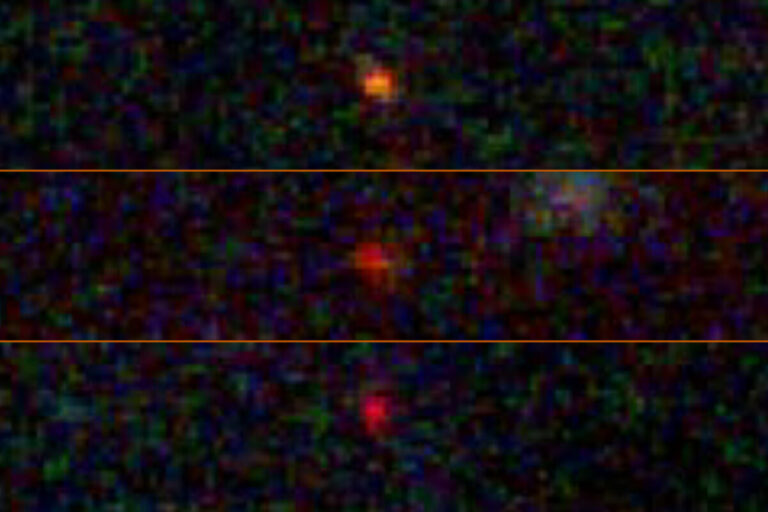
[ad_1]

A new paper proposes that the universe’s first stars were about as different from twinkling, sunlike stars as you can get. These “dark stars,” it argues, were fueled by huge globs of annihilating dark matter and seeded the galaxies we see today.
Strange as they are, such stellar bodies explain one of the newer mysteries in astronomy.
In December 2022, the James Webb Space Telescope identified three ancient galaxies as part of its JWST Advanced Deep Extragalactic Survey (JADES). These distant, deeply redshifted objects existed between 320 million and 400 million years after the Big Bang, making them among the earliest objects ever identified in the nascent universe. How had they formed so quickly, considering the first stars are estimated to have ignited not long before?
Galaxies in Disguise
The new study proposes that these galactic ancestors were not galaxies at all.
“When we look at the James Webb data, there are two competing possibilities for these objects,” said Katherine Freese, an astrophysicist at the University of Texas at Austin, in a statement. “One is that they are galaxies containing millions of ordinary, population III stars. The other is that they are dark stars.”
A dark star is a puffy concentration of dark matter that collides with itself and produces light and heat through annihilations. In the early universe, clouds of hydrogen and helium would have cooled and contracted around these concentrations, heating them further. The tighter the concentration, the more frequent the dark-matter collisions.
“If some of these objects that look like early galaxies are actually dark stars,” said Freese, “the simulations of galaxy formation agree better with observations.”
The Ultimate Fuel?
The true nature of dark matter is one of the great outstanding questions in all of physics. Scientists believe it to be a new type of elementary particle, such as a Weakly Interacting Massive Particle (WIMP), although current efforts to detect one have come up empty. At 85 percent of the matter in the known universe, the potential for dark matter to have fueled massive stars in the past is great.
“Believe it or not, one dark star has enough light to compete with an entire galaxy of stars,” said Freese. In theory, a single dark star can burn up to 10 billion times as brightly as the sun.
What’s more, Freese and colleagues have hypothesized that because dark stars formed the centers of protogalaxies, they seeded the newer galaxies we observe all around us. How did this happen? When the dark stars ran out of dark matter fuel, they collapsed into black holes, which seeded the supermassive black holes now found at the center of many galaxies.
Learning From Dark Stars
Dark-matter detectors around the world are hoping to detect one of the theorized particles, while observations of dark matter stars could reveal much about the mysterious substance. The researchers hope to revisit the three “galaxies” suspected to be dark stars, to take a closer look at their spectroscopic properties. With more data, they could confirm the exotic stars exist.
“The confirmation of even a single one of those objects as a dark star would mark a new era in astronomy,” the paper said.
Read More: What is Dark Matter Made Of? These Are the Top Candidates
[ad_2]